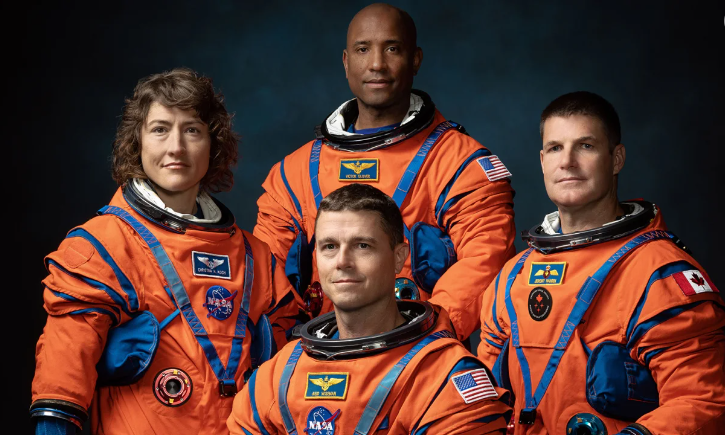Shooting for the moon
50 years since the last time humans have touched down on the moon, NASA has made a promise to put not only another foot on the lunar surface but to bring the first woman and person of color within the decade. Keeping this goal in mind, they plan to send out Artemis II, a 10-day mission out beyond the moon around November 2024.
Artemis I concluded in Dec. 2022 after NASA’s Orion capsule spent a little over 25 days in an uncrewed flight around the moon, paving the way for future missions. Building off the successful data collection, Artemis II will send a crew past the moon, which could potentially be the farthest any human has traveled. They will then circle the moon before landing back on Earth in the Pacific Ocean.
“[The] exact distance beyond the Moon will depend on the day of lift-off and the relative distance of the Moon from the Earth at the time of the mission,” Kathryn Hambleton, NASA spokesperson, said in a CNN article.
The crew selected for the mission has been emphasized for its diversity, as it includes men and women beyond the predominately White male teams that have categorized past historic voyages. The astronauts were revealed on April 3, 2023, as Reid Wiseman, Victor Glover, and Christina Koch from NASA and the Canadian Space Agency’s Jeremy Hansen. Hansen will make history as the first Canadian to travel into deep space. Koch holds her own achievement list, being a part of the first all-female spacewalk and the current record holder for the longest single spaceflight as a woman.
“I think it would be amazing to watch this group of people create history because it is full of people who, in previous times, would never be sent to do such amazing things because of their gender or nationality, so this is a big step for future astronauts and their voyages to space,” Naomi Sprecher, sophomore, said.
The astronauts’ work in Artemis II will lay the foundation for Artemis III, in which NASA will fulfill their promise to return people to the moon. This is expected within the decade and is set to have the same crew as Artemis II. The Artemis program itself was designed in aspirations for a permanent lunar outpost that would allow more long-term space exploration.
“It is so cool to see history unfold in my everyday life; I have always been interested in space and to see that NASA is now sending more people out there and there will be more moon missions in the future is amazing and will hopefully lead to the famous Mars mission,” Neal O’Connor, junior, said.
As younger generations were not there to experience the historic landing that placed the first man on the moon, make sure to follow the achievements being made today, as the selected crew are set to make revolutionary steps in space exploration.

Hi! My name is Grace, and I am a senior at Etowah. As my fourth year on the staff, I am the Head of Social Media and Marketing for The Talon. I am a part...










